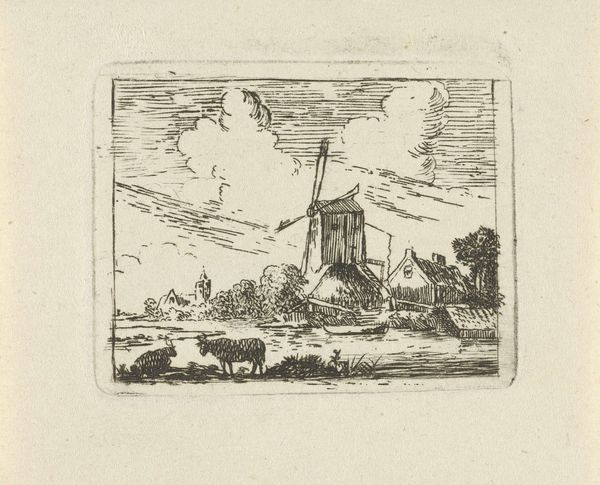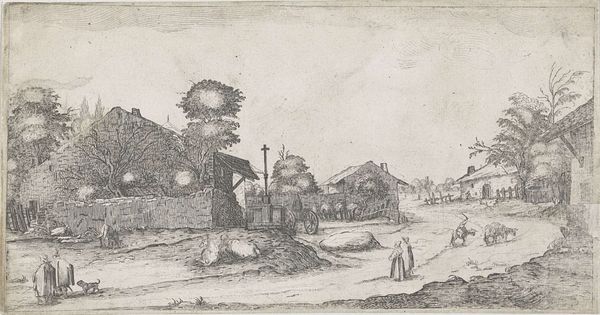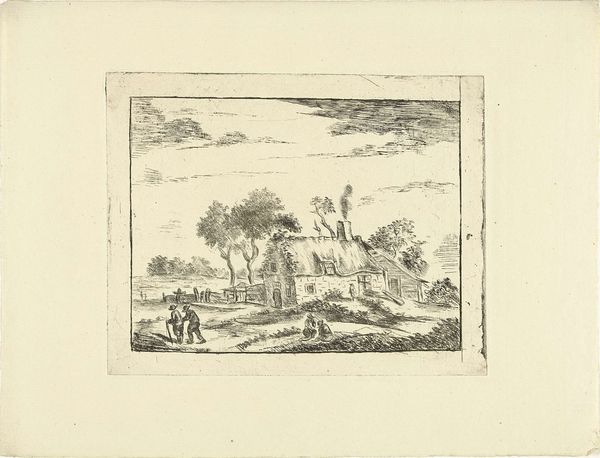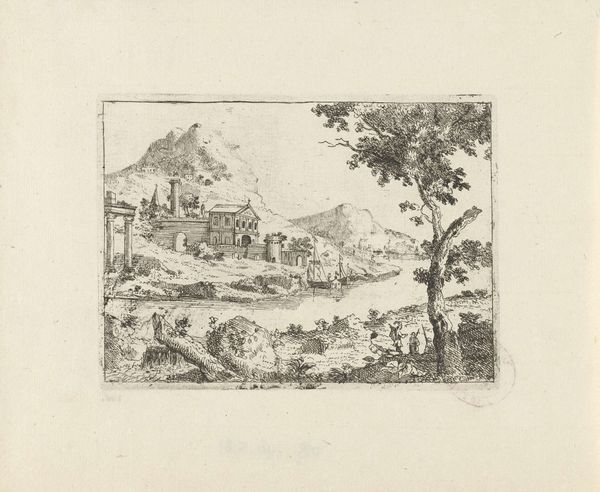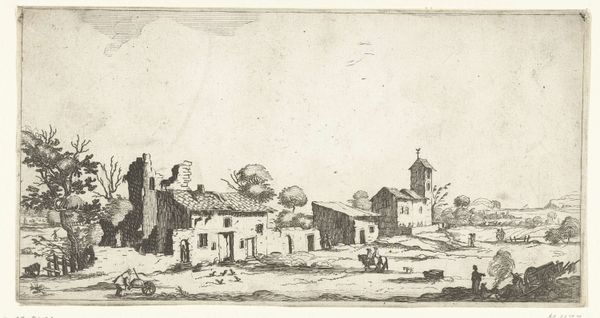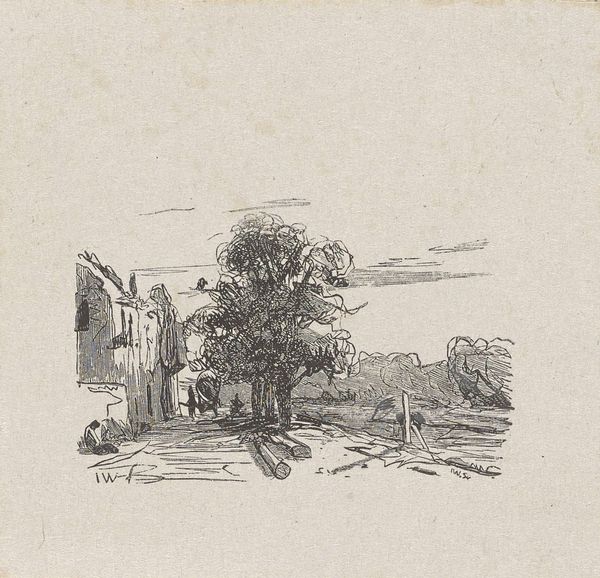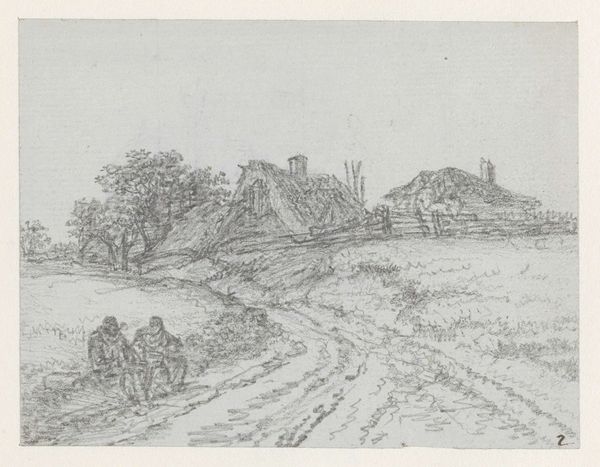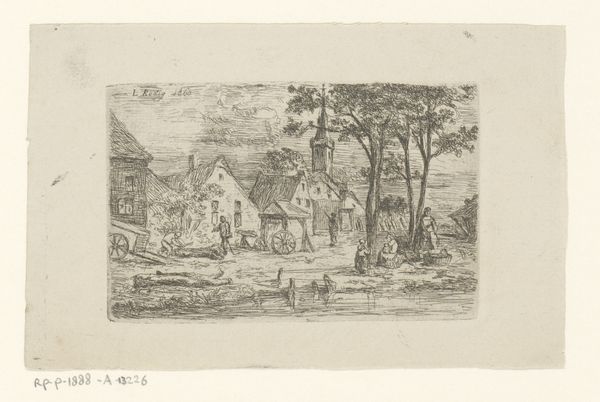
drawing, print, etching
#
drawing
# print
#
etching
#
landscape
#
romanticism
#
cityscape
Dimensions: height 82 mm, width 102 mm
Copyright: Rijks Museum: Open Domain
Curator: Look at the delicate lines in this etching by Daniël Dupré, titled "View of a City Gate," made sometime between 1771 and 1817. Editor: My first impression is one of quietude, even isolation. The image has this almost dreamlike quality to it, rendered in such fine detail. It’s quite small, isn’t it? The world feels so distant here, as if glimpsed through a hazy memory. Curator: Indeed, its intimate scale enhances that sense of looking into the past. Etchings like these were often made for print series documenting places and served a dual purpose as artistic creation and historical record. Notice how Dupré uses the contrasting areas of light and shadow to emphasize the architectural features, like the solid tower or the inviting city gate. To me it feels a celebration of enduring structures. Editor: But I see more than just celebration, I see power. City gates throughout history are the ultimate power symbol, especially for disenfranchised communities excluded behind it or subjected to unjust rules beyond it. It suggests not just what is being kept in, but what is also kept *out.* Are the towers then also signs of resistance? How might communities identify with, against, and through such strong architectural markers? It speaks to social control in that sense. Curator: That's a very compelling observation. You're drawing attention to how power and security can be interpreted. In the context of late 18th and early 19th-century Europe, many sought comfort in images of established order amidst political upheaval. The city gate and the solid tower could represent not only protection but also nostalgia for an imagined stability and continuity with the past. In this sense it takes on the role of psychological anchor during moments of societal change. Editor: Exactly. I can see both—the artistic intent and its reception. This conversation makes it such a nuanced piece of artwork that still speaks powerfully today about the structures in our life. Curator: It invites us to ponder both history and its emotional weight as symbols shift across time.
Comments
No comments
Be the first to comment and join the conversation on the ultimate creative platform.
